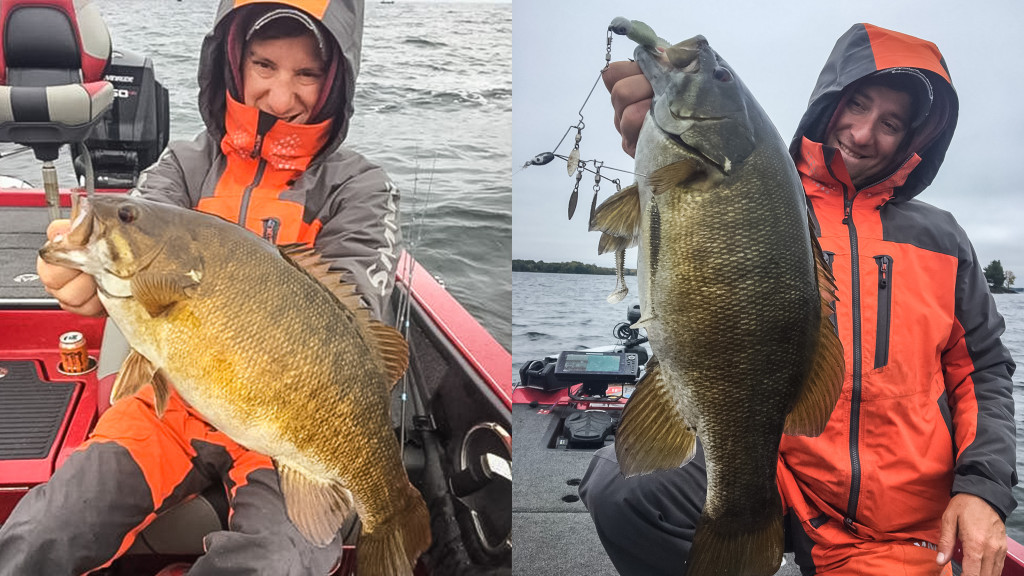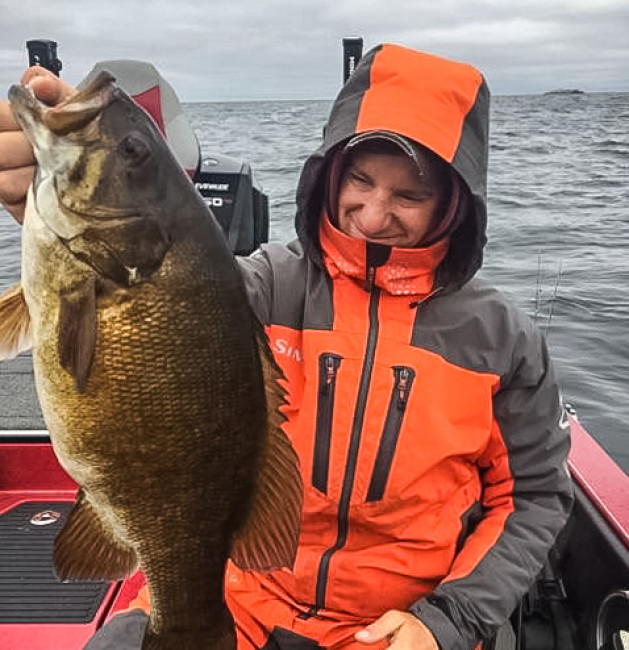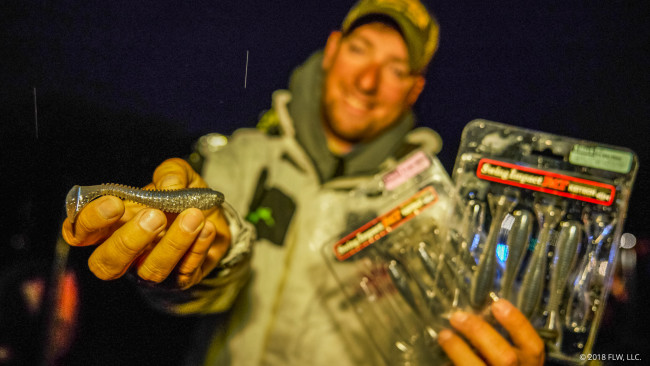Fall Smallies with Felix
How the Minnesota pro targets smallmouths as the weather cools

Austin Felix knows smallmouths. His 2018 Costa FLW Series Northern Division Strike King Angler of the Year title ought to be all the proof you need. With fall finally kicking into gear, he’s certainly going to spend some of it on the water.
“With the exception of bed-fishing, the fall is the most fun time to go fun-fishing for me,” says Felix. “When you find a group of them, you can usually absolutely cave their heads in, and it’s also the time of year when you’re going to catch the biggest fish. They can be hard to find, and they can move, but when you find them, you can take full advantage of them.”

Finding them
It’s not like smallmouth fishing is bad in the summer, but Felix really starts thinking about the fall bite when the water temperature drops below 60 degrees. It’s game on at that point.
“As the temperature falls they just get bigger and fatter and more grouped up,” says Felix. “But, the colder it gets, the more lethargic they get. They’re not necessarily harder to catch; you just have to be more methodical and slow down your presentation.”
Fishing on the Mississippi River, Mille Lacs and other northern lakes, Felix works backward to an extent in the fall, first thinking about where the bass will winter, then finding them somewhere en route.
On the river, Felix heads straight for the wing dams. Bass and shad spill out of the backwaters and into the main channel in fall. Once there, the bass set up on the current breaks provided by wing dams.
It’s a season when 22-plus-pound bags of smallmouths aren’t uncommon, unlike in the summer when that’s almost unheard of.
Lakes can require a little more searching.
“I tend to aim toward the middle of the lake – places that are farther out and closer to their wintering holes,” says Felix. “You can also find them on flats a lot, but they can be hard to find that way if you’re dropping on boulders or they’re roaming around feeding.
“The first things I usually look for are the steepest drops I can find. It can be just a 4- or 5-foot drop. Just as long as it’s a sharp vertical face they can slide up and down on depending on where they want to hold.”

A multifaceted approach
It’s easy to think of fall smallmouths as good targets for jerkbaits and other moving baits, but Felix likes to take a more methodical, bottom-oriented approach. When fishing smallmouths in the fall, Felix is likely to either be scrubbing a swimbait or umbrella rig, or dragging a drop-shot or a tube.
Felix keeps it simple when fishing a single swimbait, rolling with a 3.8- or 3.3-inch Keitech Swing Impact FAT on a 3/8-ounce head early in the fall and a 4-inch Keitech Easy Shiner later in the fall because of its more subtle action. Shad colors nearly always get the call.
His umbrella rig game is simple as well.
“I have some A-rigs that are three-armed, and I’ll throw two dummies and one bait,” explains Felix. “You can scrub that across the bottom just like you would with a normal swimbait, and you seem to get more and bigger bites. It’s something I’ll throw in tournaments or fun-fishing with a buddy – instead of a single swimbait – or when it’s windy. You might catch a different fish or fire up a school. It’s less subtle.
“It’s a lot easier than you’d expect. It’s not like fishing an A-rig on the Ozark lakes where you really have to dial it in. You pretty much just chuck it out, let it sink to the bottom and reel it back in.”
Felix uses the same baits for his umbrella rig that he uses for his normal swimbait fishing. His dummies are always smaller than his hooked bait, and he always uses a rig with blades.
His dragging baits include a 2 3/4- or 4-inch tube, a Ned rig and a drop-shot. One of his favorite drop-shot setups involves a swimbait as well.
“I run a 2-foot tag end and a 3/8-ounce weight with a 3.3 or a 3.8 Keitech Swing Impact FAT with an outbarb straight-shank [hook] and just thread it all the way on like it’s a jighead,” says Felix. “That allows you to cast it a really long way, and it’s easier to keep bottom contact, and you can work the bait slower. Instead of slow-reeling it like you do with a swimbait, you shake it while you move it so it still has that swimbait action and it stays off the bottom. You can do that casting it or drifting it too.”
The handful of baits Felix uses in the fall don’t cover that much of the spectrum, but they’re all important for loading the boat with fish.
“Usually in the fall if you can find one you can find a solid wad of them, and you can catch a bunch of them,” says Felix. “Trying different baits on them will let you catch more of them and keep them biting longer.”